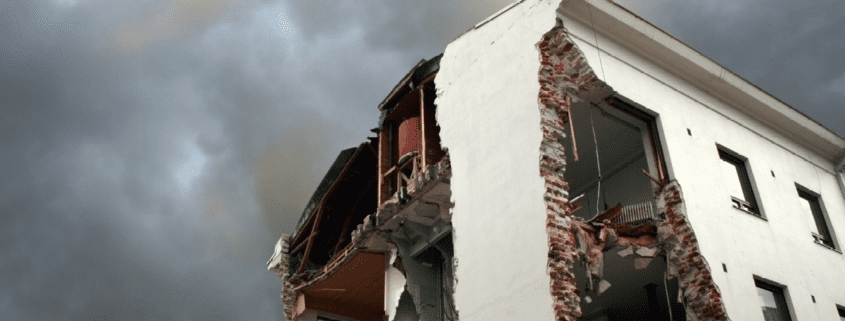The CRE Implications of the Natural Disaster Spike and What You Can Do to Prepare
The number and scale of natural disasters continue to rise, with 39 weather disasters that caused damage in excess of a billion dollars in 2018 alone. Natural disasters include all types of severe weather, including but not limited to hurricanes, tornadoes, mudslides, wildfires, earthquakes, and winter storms. Even thunderstorms can qualify as natural disasters, depending on their severity. These adverse weather events have the potential to pose a significant threat to human health and safety, property, critical infrastructure, and homeland security (DHS).
Read ahead to find out how natural disasters are impacting commercial real estate and what you can do to protect your assets and investments from this growing threat.
For more information, read about How Hurricane Season Can Affect the CRE Industry
Natural Disasters More Prevalent than Ever
Natural disasters are more prevalent now than ever before. In 2017, natural disaster damage totaled over 3 billion dollars in the US. Climate change is likely the culprit, which means there is little chance of this trend reversing itself. The most common natural disasters that threaten commercial real estate are fires, hurricanes, and earthquakes, with the effects of these leading to other catastrophes such as flooding, tornadoes, and strong winds. Both the number of disasters and their intensity are rising, leading to more severe property damage – a trend that is expected to continue.
CRE Market Impact
The aftermath of natural disasters can impact entire regions economically and take years to rebuild. Property values tend to plunge more in the second year after a large-scale disaster than the first, as it can take some time for the ripple effect of a disaster to be fully felt. For new builds, disasters can impact supply lines, causing material shortages and delays. Labor shortages could happen due to risk of injury or personal displacement. Further, investors may shy away from properties in certain cities and regions following a natural disaster because they fear a repeat event. This makes natural disasters a major market disruptor, turning supply and demand on their heads.
Natural disasters do not discriminate amongst property types, and every asset class is vulnerable to their impacts. However, multifamily developments face the added complication of residential tenants potentially pressing lawsuits related to disaster damage, especially when a property can no longer be occupied. Some insurers steer clear of this asset class, and others seize the opportunity to raise rates and deductibles, creating a buffer against potential tenant claims regardless of the risk status of the property owner.
Self-storage facilities face similar tenant-related challenges. Additionally, hospitality is hard-hit in certain regions because tourism is a driving factor in this asset class. However, hotels and short-term rentals could also experience immediate demand from displaced families, emergency workers, and construction workers.
Across all asset classes, the biggest impact of natural disasters aside from property damage is the cost to insure. According to USI’s 2019 Property Casualty and Insurance Market Outlook, it’s likely that insurance rates will surge in the next year in a bid of caution.
Tips to Prepare for Natural Disasters
The threat of natural disasters is not going to go away and is not one you can 100% avoid. However, you can be proactive and take steps now that will minimize potential damage in the future.
Property Modification
Building your properties to withstand natural threats is the most direct way to protect them from damage. For example, in wildfire-prone areas, leaving a 30-foot radius free of flammable material and using non-combustible roofing help to keep fires at bay. In flood-prone areas, using real materials instead of manufactured ones (wood instead of particle board, for example) can make repairs less expensive. Even in non-coastal areas, building to hurricane standards should protect from the occasional storm or tornado. Lastly, a geotechnical engineer should be consulted to create a strong foundation that can withstand earthquakes.
Adaptability
Natural disasters bring destruction, but they also bring opportunity. You may be strategically positioned to meet demands that come from disasters if you think ahead. For example, hospitality assets on the outskirts of evacuation zones stand to profit from the movement of people during certain types of adverse weather events. Additionally, properties that are damaged may still serve a purpose in a different capacity. Buildings that are no longer habitable could be repurposed into storage or damaged office spaces could be turned into multi-family housing. Think outside the box to identify ways to stay nimble and adapt to disruptions caused by severe weather.
Streamline Operating Costs
As is always the case, when costs rise on one front, consolidating and streamlining operations can balance the scales. Repairs, insurance premiums, and project setbacks can all cut into your bottom line, so consider implementing value-add solutions that reduce your costs elsewhere and allow you to comfortably take on the increased expenses associated with natural disasters. A technology solution such as IMS can also save you time, which means you can devote time back to value-add activities and strategies for your firm.
Natural disasters strike at random, but you can act with intention to reduce their impact and safeguard against loss. Modifying your properties and planning ahead may result in less damage in the event of a disaster, and optimizing to reduce cost can help you save resources to address the challenges that come with extreme weather.
To see how else CRE tech can add value to your firm, download this free best practice checklist!




